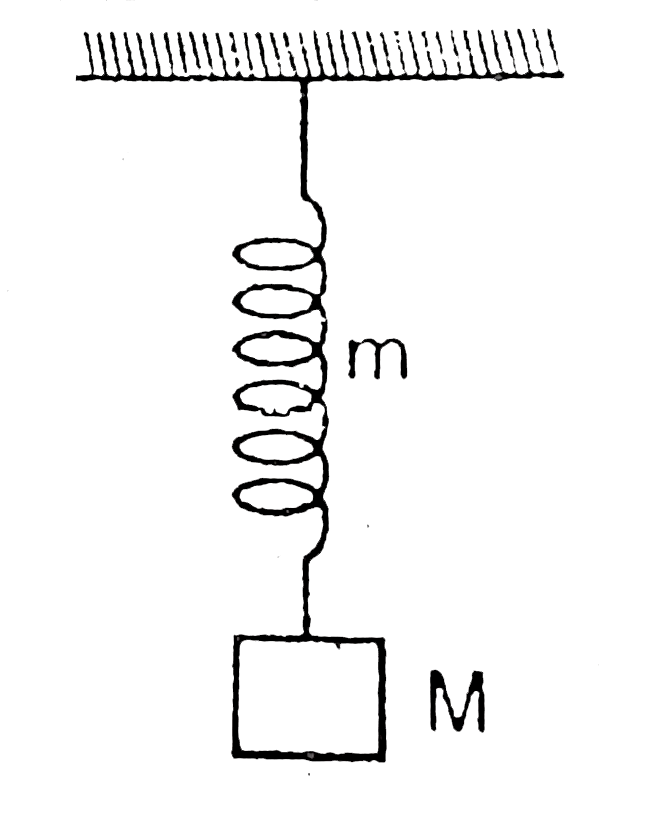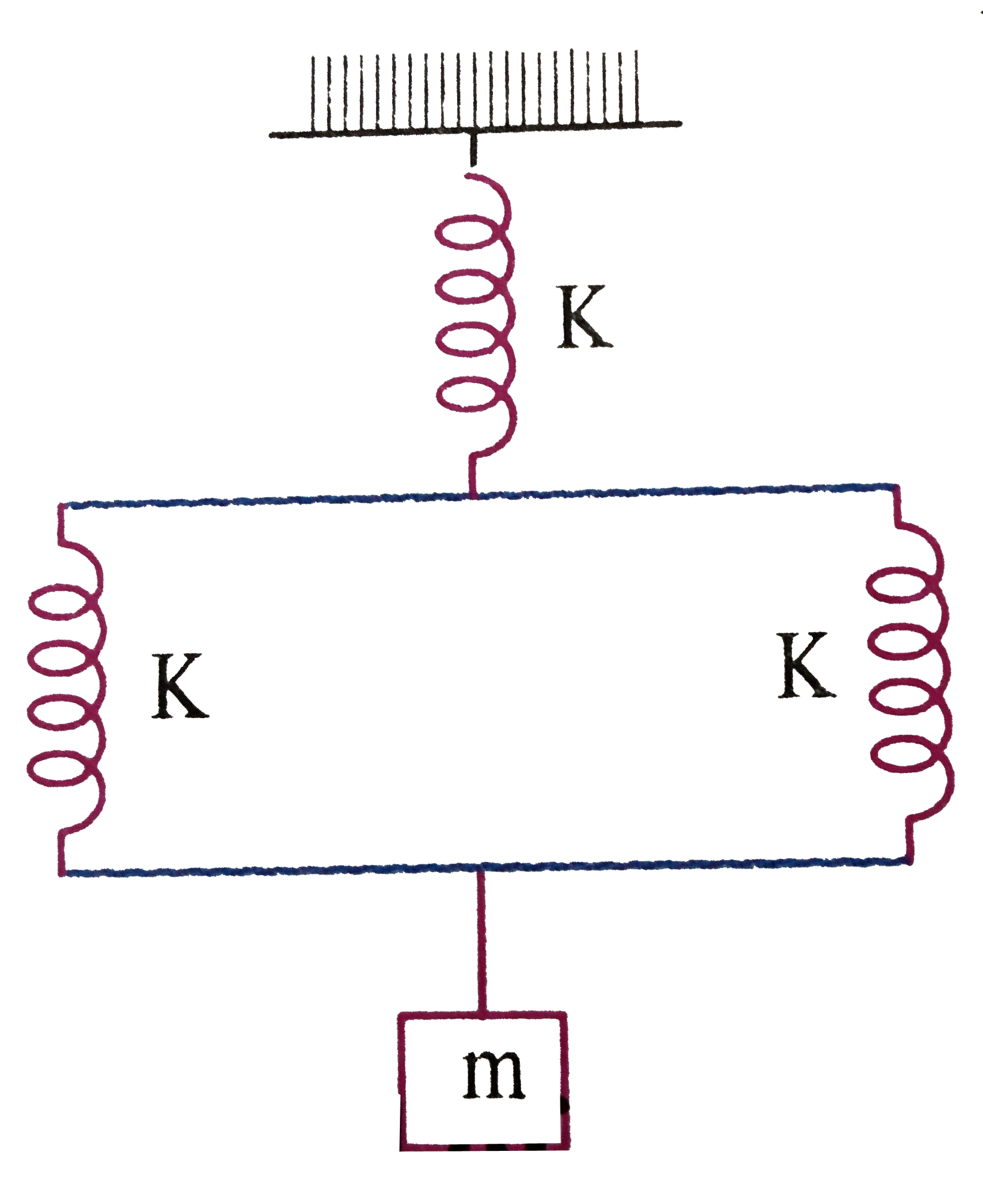A mass M is suspended from a spring of negiliglible mass the spring is pulled a little and then released so that the mass executes simple harmonic oscillation with a time period T If the mass is increases by m the time period because (54T),The ratio of mM is
9/16
5/4
25/16
4/5
The correct Answer is:A
To solve the problem, we need to analyze the time period of a mass-spring system before and after an additional mass is added.
1. Understanding the Time Period Formula:
The time period T of a mass M suspended from a spring with spring constant K is given by the formula:
T=2π√MK
2. Initial Time Period:
For the initial mass M, the time period is:
T=2π√MK(Equation 1)
3. New Mass After Adding m:
When an additional mass m is added, the total mass becomes M+m. The new time period T′ is given as:
T′=54T
4. Time Period with New Mass:
The time period with the new mass is:
T′=2π√M+mK(Equation 2)
5. Setting Up the Equation:
From the information given, we can equate the two expressions for T′:
54T=2π√M+mK
6. Substituting T from Equation 1:
Substitute T from Equation 1 into the equation:
54(2π√MK)=2π√M+mK
7. Canceling Common Terms:
We can cancel 2π from both sides:
54√MK=√M+mK
8. Squaring Both Sides:
Squaring both sides gives:
(54)2MK=M+mK
2516MK=M+mK
9. Multiplying by K:
Multiplying both sides by K (assuming K≠0):
2516M=M+m
10. Rearranging the Equation:
Rearranging gives:
m=2516M−M
m=(2516−1)M
m=(25−1616)M
m=916M
11. Finding the Ratio mM:
The ratio of mM is:
mM=916
Final Answer:
The ratio of mM is 916.
---
The time period T of a mass M suspended from a spring with spring constant K is given by the formula:
T=2π√MK
For the initial mass M, the time period is:
T=2π√MK(Equation 1)
When an additional mass m is added, the total mass becomes M+m. The new time period T′ is given as:
T′=54T
The time period with the new mass is:
T′=2π√M+mK(Equation 2)
From the information given, we can equate the two expressions for T′:
54T=2π√M+mK
Substitute T from Equation 1 into the equation:
54(2π√MK)=2π√M+mK
We can cancel 2π from both sides:
54√MK=√M+mK
Squaring both sides gives:
(54)2MK=M+mK
2516MK=M+mK
Multiplying both sides by K (assuming K≠0):
2516M=M+m
Rearranging gives:
m=2516M−M
m=(2516−1)M
m=(25−1616)M
m=916M
The ratio of mM is:
mM=916
The ratio of mM is 916.
Similar Questions
A mass M is suspended from a spring of negligible mass. The spring is pulled a little then released, so that the mass executes simple harmonic motion of time period T. If the mass is increased by m, the time period becomes 5T3. Find the ratio of m/M.
View SolutionA bar magnet is oscillating in the earth's magnetic field with a time period T. If the mass is increased four times, then its time period will be:
View SolutionThe period of oscillation of mass M suspended from a spring of negligible mass is T. If along with it another mass M is also suspended, the period of oscillation will now be
View SolutionA mass M is suspended from a light spring. An additional mass m added to it displaces the spring further by distance x then its time period is
View Solution
A block of M is suspended from a vertical spring of mass m as shown in the figure. When block is pulled down and released the mass oscillates with maximum velocity v.
View SolutionA body of mass m is attached to the lower end of a spring whose upper end is fixed. The spring has negligible mass. When the mass m is slightly pulled down and released, it oscillates with a time period of 3s. When the mass m is increased by 1kg, the time period of oscillations becomes 5s. The value of m in kg is
View SolutionA body of mass m is suspended from three springs as shown in figure. If mass m is displaced slightly then time period of oscillation is

View SolutionA mass M is suspended from a massless spring. An additional mass m stretches the spring further by a distance x. The combined mass will oscillate with a period
View SolutionA mass M is suspended from a massless spring. An additional mass m stretches the spring further by a distance x. The combined mass will oscillate with a period
View SolutionA mass m is vertically suspended from a spring of negligible mass, the system oscillates with a frequency n. what will be the frequency of the system, if a mass 4m is suspended from the same spring?
View Solution
